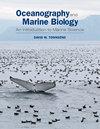人类活动对本格拉海洋生物的影响:历史综述
1区 生物学
Q1 Agricultural and Biological Sciences
引用次数: 76
摘要
本文综述了本格拉地区人类活动的历史概况,并记录了人类活动对海洋动物的影响。考虑到传统工业和近海渔业的活动,但也包括非渔业活动,如海水养殖、河流流量调节、海洋入侵物种的引入、海洋建筑和采矿、污染和气候变化。人类的影响可以方便地分为四个时代:土著时代(距今约10000年- 1652年),前工业化时代(约1652年- 1652年)。1910年),工业(1910-c)。1975年)和后工业时代(1975年至今)。土著时代的特点是主要是低水平的潮间带开发;前工业化时代通过对少数大的、可接近的物种的密集开发;技术发展带来的工业时代和随后的捕获量大幅增加;后工业时代通过改善资源管理和稳定捕捞量,但增加了对系统的非渔业影响。在过去的200年里,从该系统中提取的生物量超过5000万吨,导致群落结构发生了重大变化。在20世纪60年代,采掘率达到了130多万吨/年的峰值,随后下降了50%以上。鲸鱼、海豹、远洋和底栖鱼类的数量正在从历史上的过度捕捞中恢复过来,而近岸鱼类,特别是鲍鱼、岩龙虾和近岸鱼类的数量仍然严重减少。本文章由计算机程序翻译,如有差异,请以英文原文为准。
Impacts of human activities on marine animal life in the Benguela: A historical overview
This review provides a historical overview of human activities in the Benguela and documents their effects on marine animal life. Considered are the activities of conventional industrial and inshore fisheries but also nonfishery activities, such as mariculture, regulation of river flow, introduction of marine invasive species, marine contruction and mining, pollution and climate change. Human influences may conveniently be divided into four epochs: aboriginal (c. 10,000 before present (BP)-c, 1652), preindustrial (c. 1652-c. 1910), industrial (c. 1910-c. 1975) and postindustrial (c. 1975-present). The aboriginal epoch is characterised by low levels of mainly intertidal exploitation; the preindustrial epoch by intense exploitation of few large, accessible species; the industrial epoch by technological development and a subsequent massive escalation in catches; and the postindustial epoch by improved resource management and stabilisation of catches, but increasing nonfishery impacts on the system. Over 50 million t of biomass has been extracted from the system over the past 200 yr, resulting in significant changes in community structure. Extraction rates peaked at over 1.3 million t yr -1 in the 1960s and have subsequently declined by over 50%. Populations of whales, seals and pelagic and demersal fishes are recovering from historical overexploitation, while those of inshore stocks, particularly abalone, rock lobster and inshore linefishes, remain severely depressed.
求助全文
通过发布文献求助,成功后即可免费获取论文全文。
去求助
来源期刊
自引率
0.00%
发文量
0
期刊介绍:
With increasing interest in the field and its relevance in global environmental issues, Oceanography and Marine Biology: An Annual Review provides authoritative reviews that summarize results of recent research in basic areas of marine research, exploring topics of special and topical importance while adding to new areas as they arise

 求助内容:
求助内容: 应助结果提醒方式:
应助结果提醒方式:


